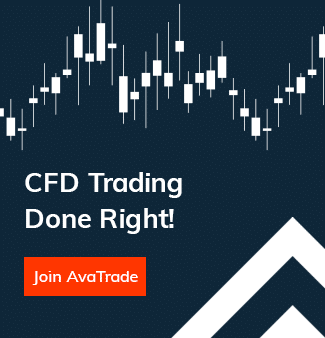
Trade Energy
An advantage of trading commodity CFDs such as crude oil with Friedberg Direct is the benefit of trading freely without owning the actual asset. This gives you the flexibility to trade against the price movements without having to buy or sell the actual instrument. If you believe the price will go up or down, your profit and loss in trading CFDs is decided and calculated by the difference in the price at which you buy or sell.
Start trading oil and energies with Friedberg Direct and enjoy the benefits of trading with a regulated Canadian broker!
Trade oil and energies on the popular MetaTrader 4 or MetaTrader 5 platform and benefit from:
- Leveraged trading
- Competitive spreads
- Technical and Fundamental Analysis and educational materials
- Get 24/5 technical support
A trader can also benefit from a short position, which is when a trader sells at a given price with the intention of purchasing at a lower price at a later date.
| Exchange | Trading Hours (GMT Time) |
|---|---|
| NYMEX | 22:00-20:59 |
| CBOT | 00:00-12:44 & 13:30-18:14 |
| ICE US | 07:30-16:59 |
| ICE EUROPE | 00:00-21:59 |
| COMEX | 22:00-20:59 |
What is Petroleum
Crude oil, sometimes mistakenly referred to as petroleum, is a fossil fuel. It is formed from the remains of plants, algae, and bacteria. During millions of years of extreme heat and density, they were transformed into carbon-rich resources, which are the raw material for fuel and other products.
Petroleum is a mixture of hydrocarbons and paraffin, in some cases, and other aromatics and cycloparaffins. Usually found in deep rock strata but sometimes near the earth’s surface, when mined and refined, hundreds of petrochemicals are extracted and used to produce many different products. Crude petroleum is made of approximately 80% carbon compounds, and a combination of hydrogen, nitrogen, oxygen, and sulphur.
Oil Demand
Transportation Sector: Most of the oil demand today and in the future comes from the road transportation sector (based on the World Oil Outlook – WOO). In 2015 it accounted for 45% of the overall demand, and this is expected to remain at this mark until 2040. The second largest contributors to oil demand are the construction and mining industries consisting of iron, steel, glass and cement production. Following these comes the sectorial industry, which is expected to slow down as the world moves closer to a service-oriented economy.
The fourth sector demanding the most oil is made up of the residential/commercial/agriculture industries, which account for about 11%. This industrial demand is expected to remain the same over the next 20 years. Other industries, such as aviation, are expected to grow, while demand in the electricity generating sector should remain as is starting around 5.3 mb/d, but in the long run, expected to decline.
Despite slower economic growth, China is forecast to increase demand for oil in the coming years. And India is becoming the world’s fastest growing consumer of oil with rising incomes and a rising numbers of cars. In Brazil, more oil will be required since this country is a leader in the chemical market and production of polyethylene, the main raw material for plastic production.
Friedberg Direct Offers the Following Oil and Energy CFDs:
What Influences the Oil Market Price
Oil prices change daily and are determined by traders who bid on oil futures contracts. These contracts are agreements that give traders the right to purchase oil at a set price based on the projection made. Both the buyer and seller set delivery dates in the future at set prices.
There are several factors that traders consider.
- Oil Demand: Estimates are provided by the Energy Information Agency; seasonal considerations are taken into account. As demand increases the price should go up.
- Current Supply: OPEC supply and US shale oil production are analyzed. As supply increases, the price should go down.
- Access to future supply: This depends on oil reserves in US refineries and the rest of the world. These reserves can be retrieved easily if prices get too high.
- World Crisis: A potential crisis could increase oil prices, since traders worry that war or famine, for example, could limit overall supply.
- Man-made and natural disasters such as hurricanes, floods, and oil spills can all influence the price of oil and the world supply of oil.
- Currency strength: Most Energy products are priced in USD, and thus it would be wise to monitor the dollar index in order to better forecast the price dynamics.
For new and experienced traders interested in trading energies and oil, Friedberg Direct has many additional services and benefits to help you get started. Educational tools, including our Trading For Beginners articles to help you succeed. Don’t forget to check out the CFD Rollover dates to know when the current energy contracts expire.
Trade Energy Commodities with your number one regulated broker today and enjoy the various benefits we provide.
Main Energy Trading FAQs
- What is energy trading?
Energy trading involves trading the different energy commodities like oil, natural gas, heating oil, gasoline, or even electricity. Energy commodities tend to be quite volatile, making large price swings. They also tend to trend quite well. Both of these characteristics make energy trading the choice for traders who are looking for large profit potential. When adding in the leverage possible with CFDs on energy commodities these are an ideal choice for the aggressive trader.
- How do I trade energies?
There are a number of ways to trade energy commodities, including via futures, ETFs, or indirectly through equities. One of the most excellent ways to trade energies is with CFDs. These provide traders with easy access to the market, low fees, high liquidity, and excellent leverage. In order to choose the proper direction to trade it is necessary to learn how the energy markets are correlated with economic data, as the energy commodity markets tend to react quite strongly to certain economic data points.
- What is the best energy to trade?
The volatility and liquidity in oil markets make them an excellent vehicle for trading in the energy markets. Oil prices can easily change by several percentage points in a single session. That opens up large opportunities for traders. For example, the volatility in crude can be exploited through a derivative strategy. These consist of simultaneously buying and selling options. One strategy called a long straddle is when the traders buys both a call and a put with the same strike price. This strategy is profitable as long as there is a large move in price, no matter whether it is higher or lower.







